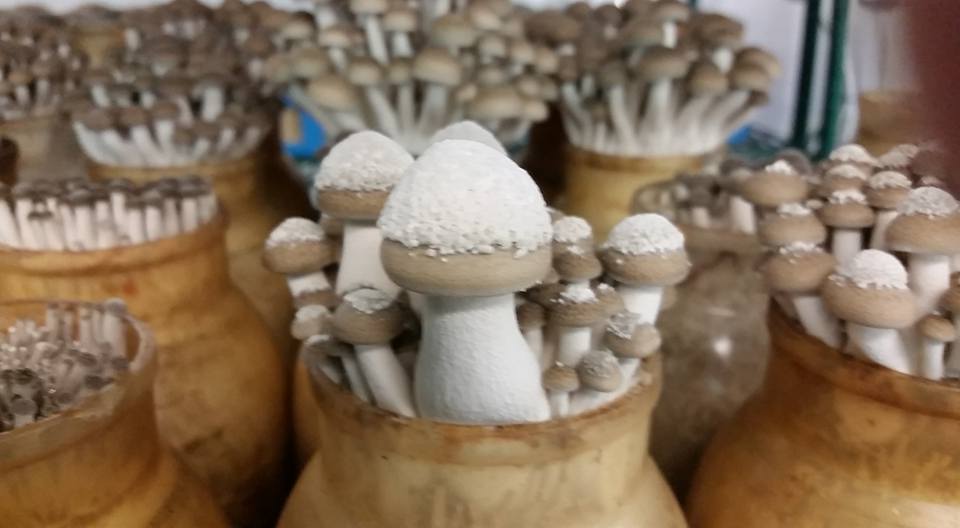The Sexual Nature of Mushrooms
By Glenn Walker
What is a mushroom? This is a question I always ask my Mushroom Cultivation and Identification students during the first class, so we all start off on the same page. The answer that is commonly given is that a mushroom is a fruiting body of a fungus. The common analogy is to an apple on an apple tree. This analogy is useful in illustrating that the mushroom is not the entire organism, that there is a part of the organism that lives on beyond the life of the mushroom itself and that the mushroom has something to do with the reproduction of the fungus. However, if one thinks carefully about the biology of apples and mushrooms the analogy becomes less accurate. An apple is a fruit – colored and sweetened to attract mammals to disperse the seeds inside – fertilized embryos needing a new home away from the parent tree with space to grow. This is similar, but not exactly the function of a mushroom – maybe a truffle comes closest because it produces an odor to attract mammals for spore dispersal.
The purpose of a mushroom is to disperse spores. Spores are analogous to genderless mammalian sperm and egg (rather than fertilized embryos as in a plant fruit), except that spores generally all look and function identically, without a tail on the male version, etc. However generally 2 spores must still come together in some way to make the fungus capable of making a mushroom and completing the cycle of sexual reproduction. Therefore, a mushroom is more like a genderless fungus penis than it is like an apple on an apple tree. The mushroom shoots its genderless spores into the air and ones that germinate and find a compatible partner will engage in sexual reproduction if all goes well.
While the analogy to a male reproductive part may be an obvious choice based on physical structural similarity, an analogy could also be made to female reproduction and fittingly this analogy may be more beautiful. If the mushroom is equivalent to a genderless penis, then it could also be compared to an ovary that releases many genderless eggs at once. That would make the air analogous to the uterine tubes and the entire surface of the earth becomes the uterine lining which nurtures the developing embryo (fungal vegetative mycelium). This is an interesting and accurate analogy that supports the idea of the earth as our mother as all life is incubated and ultimately springs from the surface of the earth. What an incredible uterus it is that nurtures all varieties of life!
These are the fundamentals that need to be understood by the fungal geneticist or breeder seeking to generate strains for cultivation. Cultivated mushroom strains are valuable and stability in production is desired so clones are generally used for propagation of mushrooms rather than spores. Now that you understand a bit about mushroom sex, perhaps you can see that the strains resulting from various combinations of 2 compatible spores will be unique individuals with variation similar to that one might see in a litter of puppies. All combinations of spores will result in different individuals, hardly the situation one would desire for consistent results in mushroom production. The breeder will make many combinations, look for the one that produces consistent desirable mushrooms then use that one exclusively, attempting to maintain its productivity as long as possible using storage and propagation methods that preserve the vitality and properties of the strain. The breeder will use spores to generate variation and new strains with superior qualities for growing but the commercial mushroom grower will use tissue culture to minimize variation in the selected strain and ensure that each crop produces mushrooms of high quality and yield that the strain was selected for.
With so much to learn about the cultivation of fungi and the development of new mushroom strains, we need both types of work to be ongoing. Breeders should be constantly developing new variation and making new selections for better, more nutritious, more delicious, higher yielding and quicker strains, while the spawn supplier and grower continue to maintain and use the latest strain that the state of the art/science has produced.
The mechanism of sexual reproduction in mushrooms must be understood and controlled by the mushroom breeder and grower in order to have a steady supply of beautiful, delicious edible mushrooms.


